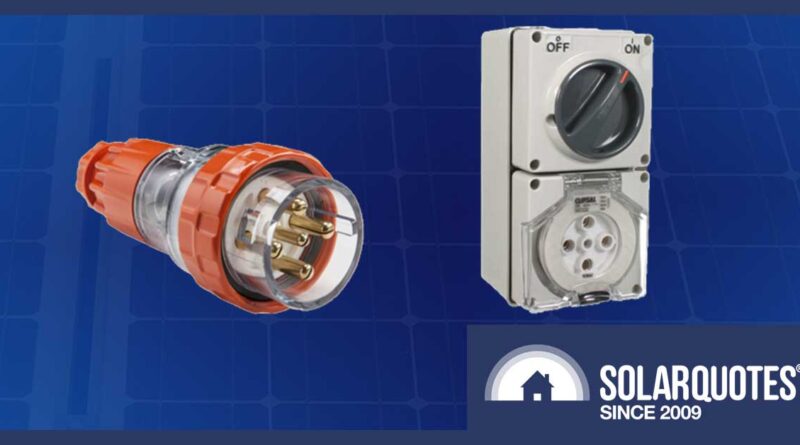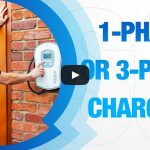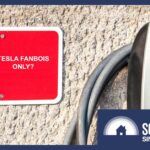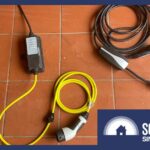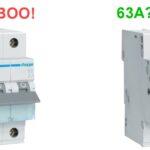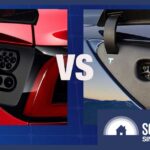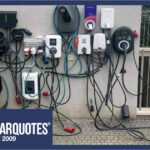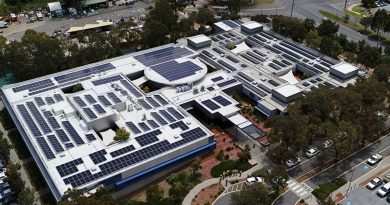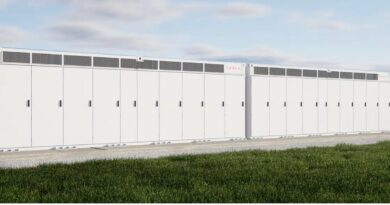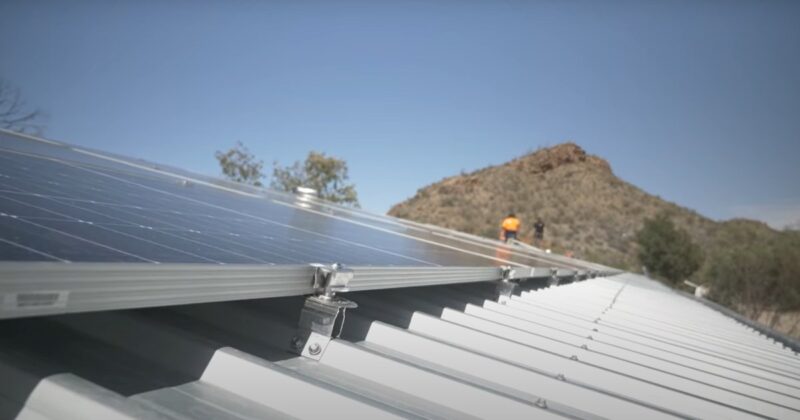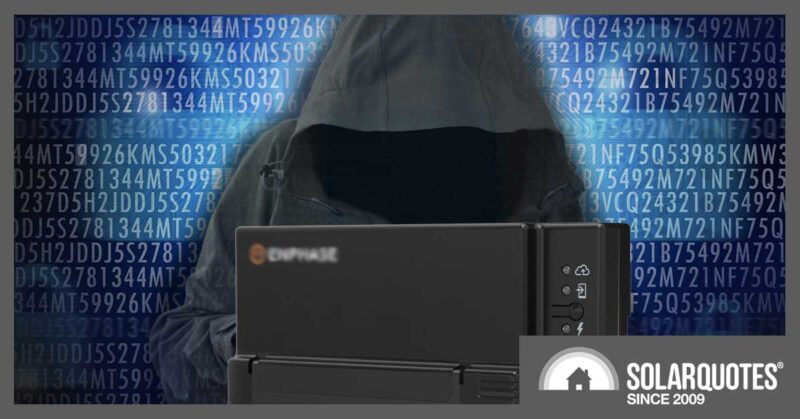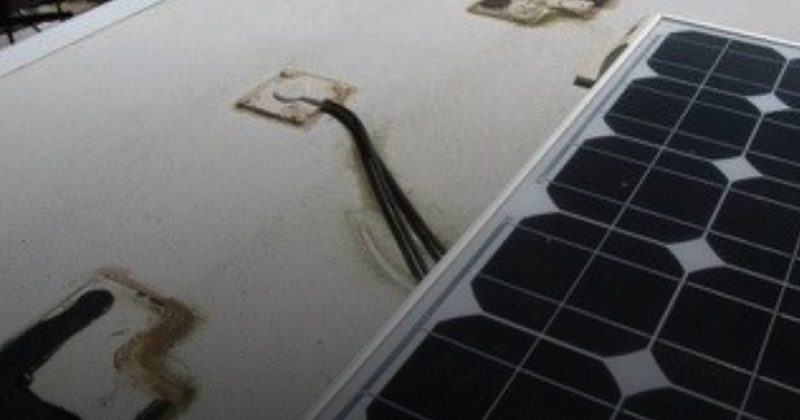Should You Install An Industrial Socket For Home EV Charging?
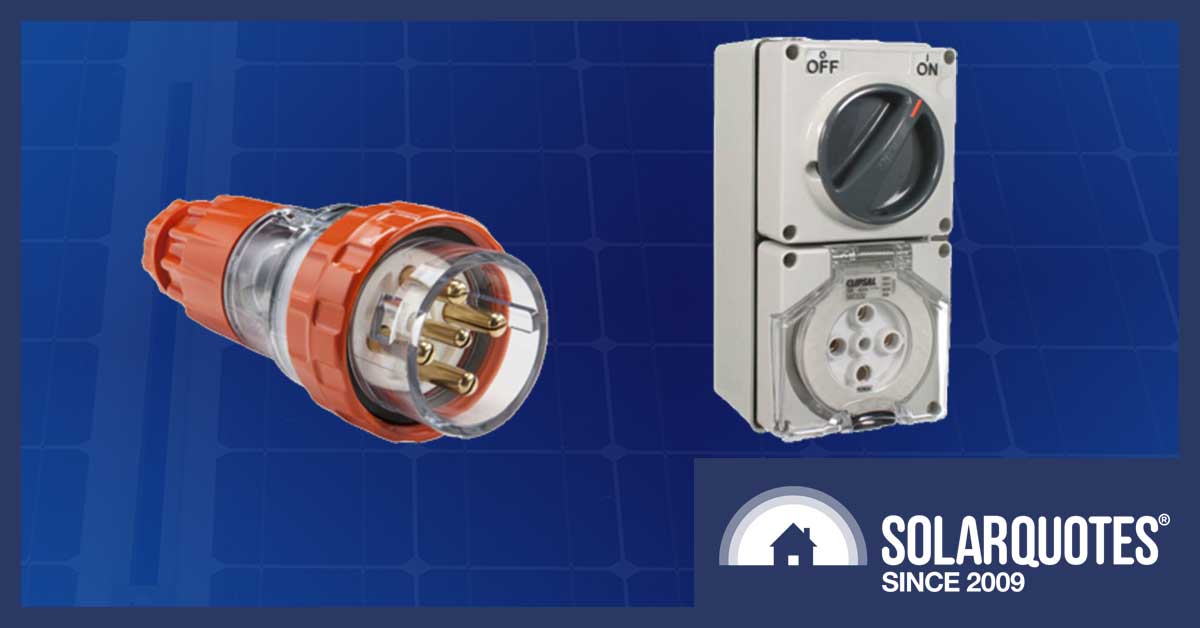
Standard Australian socket and plug for 32 amps 400 volts 3 phase power.
TL;DR: Hell, yes.
In Australia, the wall socket pictured above is your go-to option for a 3-phase electricity supply, while this one is for single-phase:
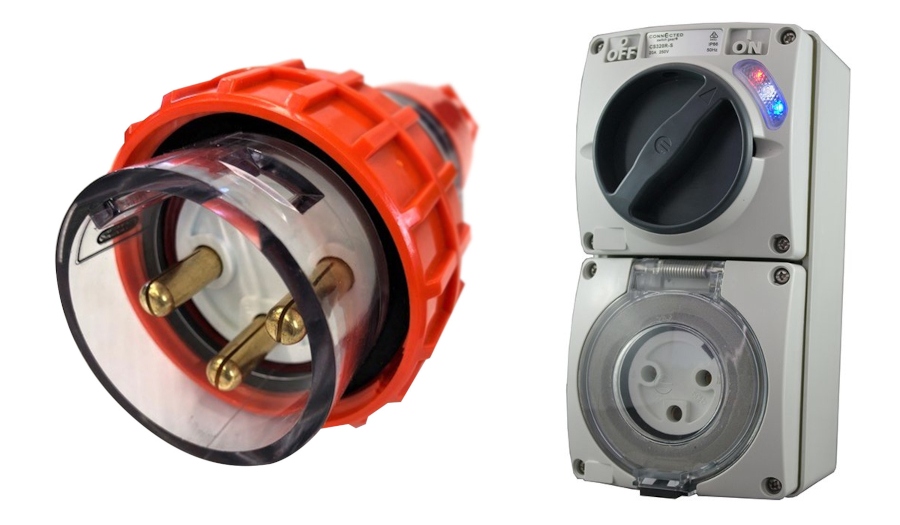
An industrial-duty 32A single-phase plug and socket outlet, suitable for the Tesla outfit pictured below. These might become popular in Queensland.
I see a future where everywhere you park, there will be at least a modest-sized socket to charge an EV. Maybe you don’t plan on an electric vehicle yet, but if you’re building a house or garage, you’d be mad not to run a cable to the garage – and a socket outlet is a handy way to terminate that supply.
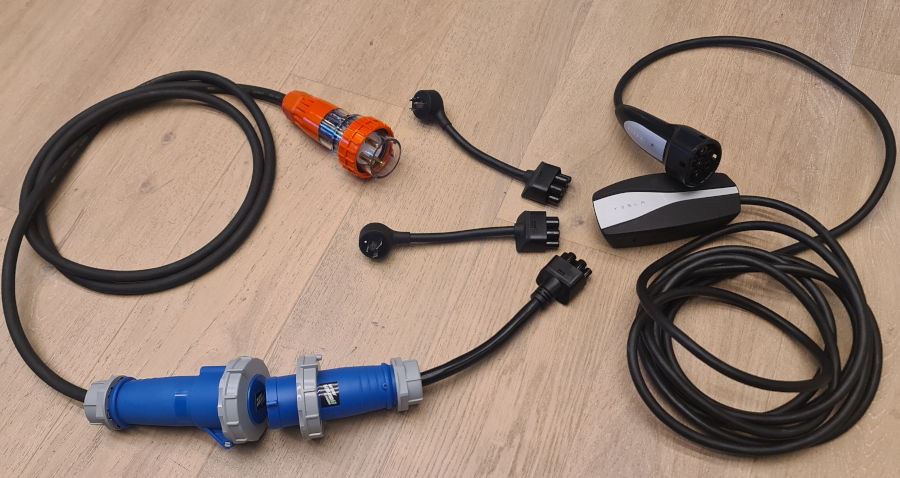
A Tesla brick EVSE on the right, with three adaptor tails offering 10A, 15A and 32A via a third-party kit. The blue CEE socket is further adapted to a standard Australian 32A plug in orange. This orange plug can be swapped for 20A, single-phase, 20A 3-phase and 32A three-phase plugs depending on the outlet. Handy when travelling in the country where industrial sockets are much more common than EV charge stations1.
Standardised CEE Sockets aren’t especially common unless perhaps you’re plugging in a refrigerated shipping container or staging an international touring act. Still, the principle remains the same. A heavy-duty 3-phase general-purpose outlet means you can use all manner of things that require lots of power, (e.g. heavy machinery or a potter’s kiln) without needing an electrician to hardwire them.
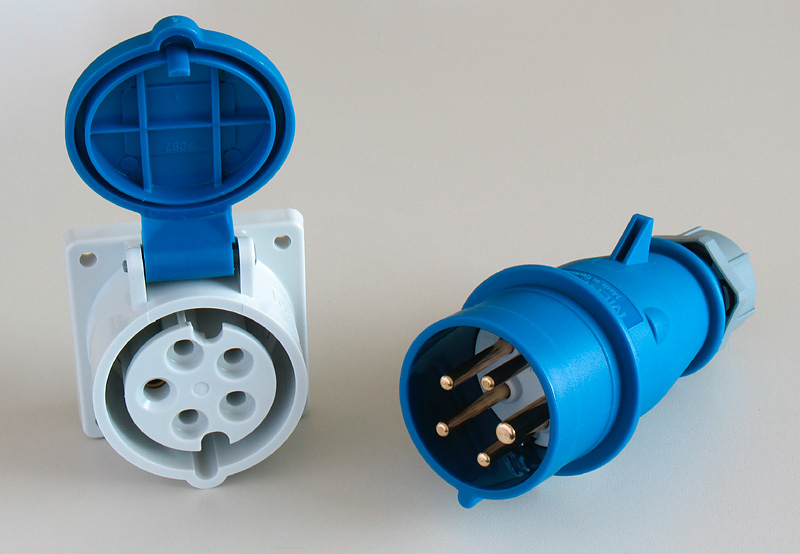
CEE-Stecker und Buchse 3P+N+PE 9h for 110/230V – credit Wikipedia
Some EV Chargers Need A Socket
If you buy a Fronius Wattpilot Go, then it comes with a plug. This means you can have a socket installed at home, at your work, at your holiday house and not have to spend $1000+ per premises screwing electric vehicle supply equipment (EVSE) to the wall. I know some electricians actually prefer to install an EV charger this way. It saves on emergency call-outs if the end-user can remove a faulty unit to get it repaired.
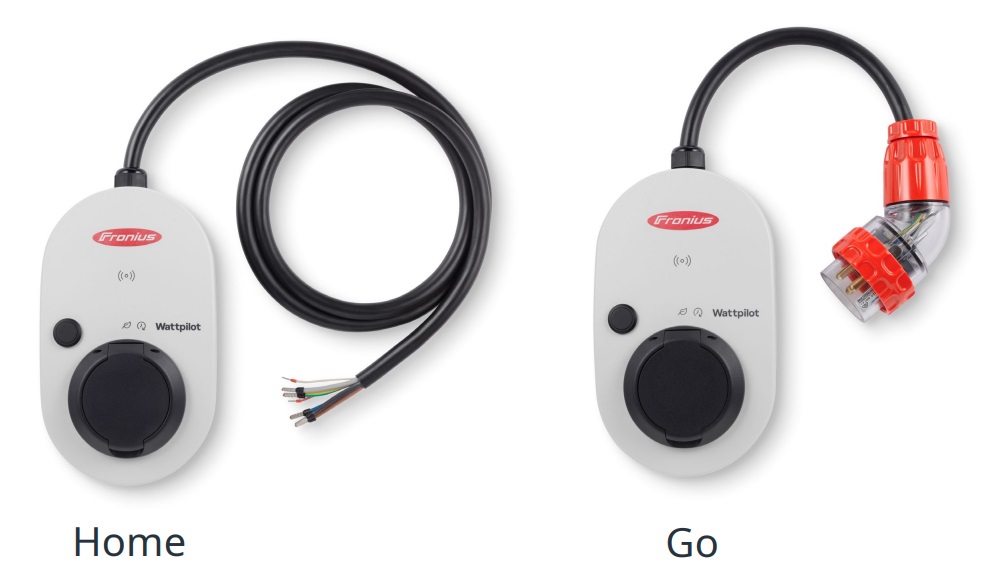
The Fronius Wattpilot home versions are hardwired in, while the Go version gets to go. The large dark circle is a plug cover, while the small dark circle is a button that allows you to adjust the charge rate.
Skirting The Rules
Queenslanders may be aware by now they can’t have a full 7kW/32A EV charger on a single-phase supply, unless it’s hard-wired to an off-peak tariff. We’ve written about this rule and the ludicrous situation of paying coal prices for your own sunshine, but if you want an anytime EV charger, 4.6kW/20A is all Energy Queensland want you to have.
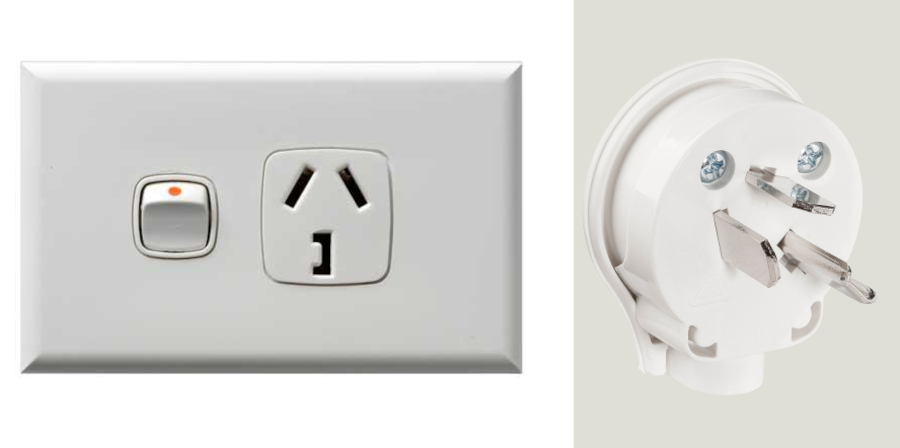
The less obtrusive 32A single-phase outlet. I would still opt for a round pin industrial type at the top though.
Many have claimed there’s no rule against installing a 32A socket outlet in a Queenslander’s garage. If the end user plugs an EV into it, well, that’s on them, even if they might technically be breaking some service rules stating you shouldn’t switch on a 20A load without first getting network permission.
Electrically, It Doesn’t Need An Isolating Switch
Many electricians install an isolator when they install a permanent EVSE. They do it on general principle, and it’s handy for several reasons. It means changing the EVSE over for service or replacement is much easier, and it can offer a simple way to lock out unauthorised users. However, AS3000 says an EV charger is technically a socket outlet (not a hard-wired appliance), so an isolator isn’t required.
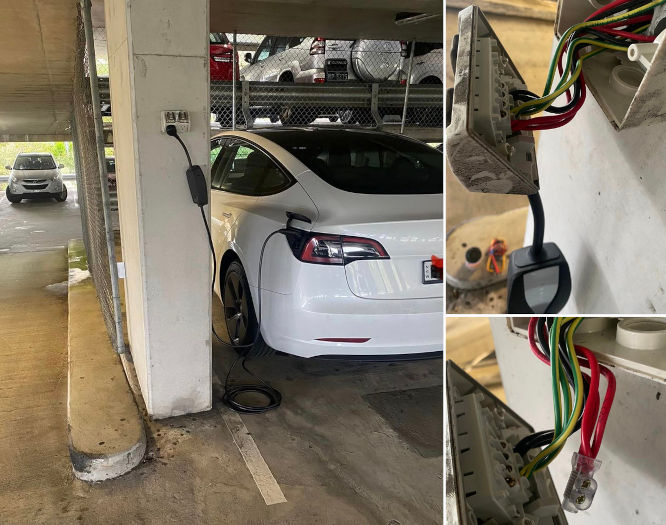
Speaking of isolators. Petty car park operators are paying electricians $150/hr to isolate power points that cost a measly couple of kilowatts to run.
Culturally, We Do Need A Switch
Pulling up and plugging in has to be the new norm as we soak up cheap daytime electricity.
Early adopters of EVs have for years listed private homes with EV charging, partly from necessity because public charging was so sparse but also because having a local you could trade EV tales with while your car topped up was a good community builder.
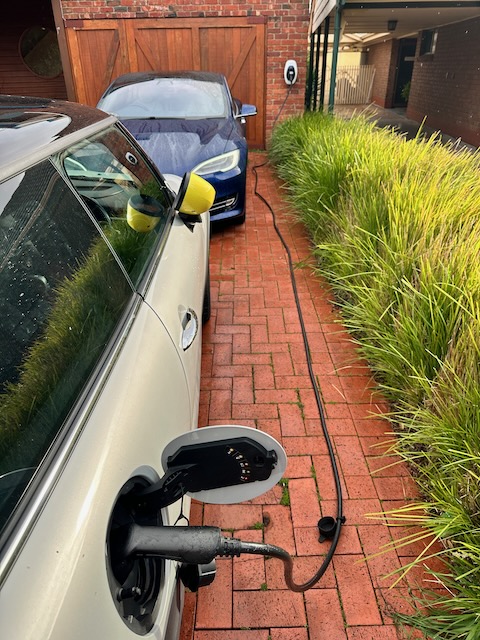
Drinks in the fridge and a 10m lead in the driveway, ready for visitors.
Will Standard, 10A Power Points Suffice?
Personally, my EV and plug-in hybrid have modest batteries and I get away with standard 10A power points at my place. Moving forward, full EVs in Australia will mostly use CCS plugs and charge at 32A, 7kW on single-phase and 11-16kW on three-phase. This allows you to fill a modern EV overnight from empty and, more importantly, top-up quickly during the limited times that solar power or super-off-peak electricity is available.
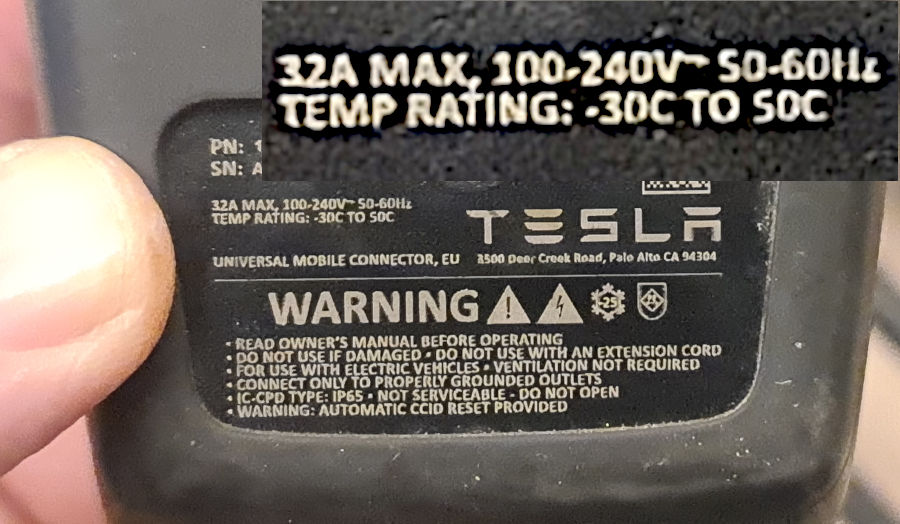
Why do phone/computer/car chargers have impossibly small print? At 32A, the $550 Tesla mobile connector is just as capable as the $750 Tesla Wall Connector on a single-phase supply.
How Good Is The Internet?
While researching this article, I came across these two beauties I had to share. A recessed wall charger:
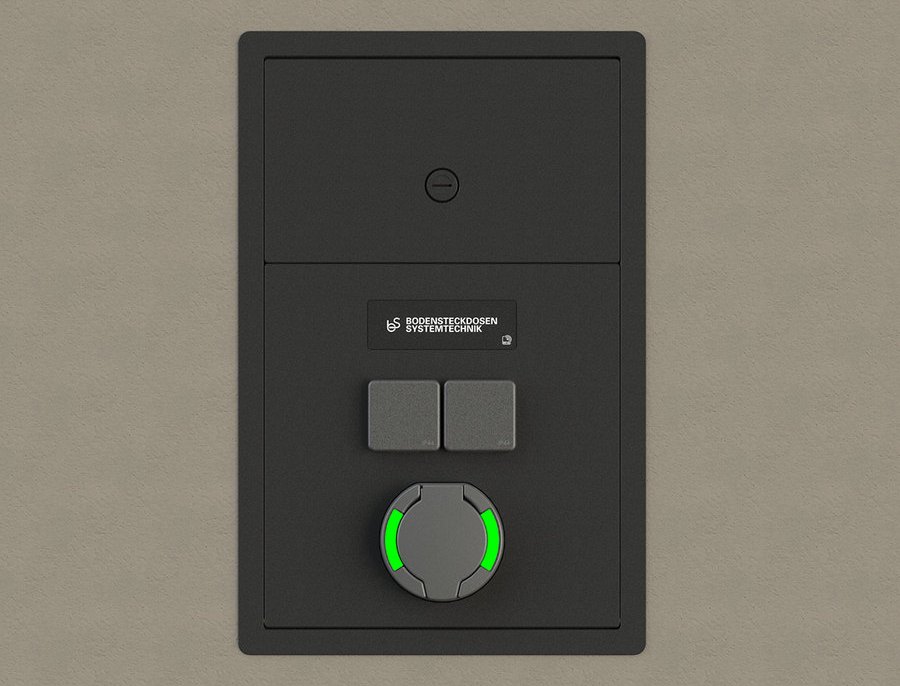
And even better, an IP67-rated solid aluminium retractable power outlet that drops flush into the ground:
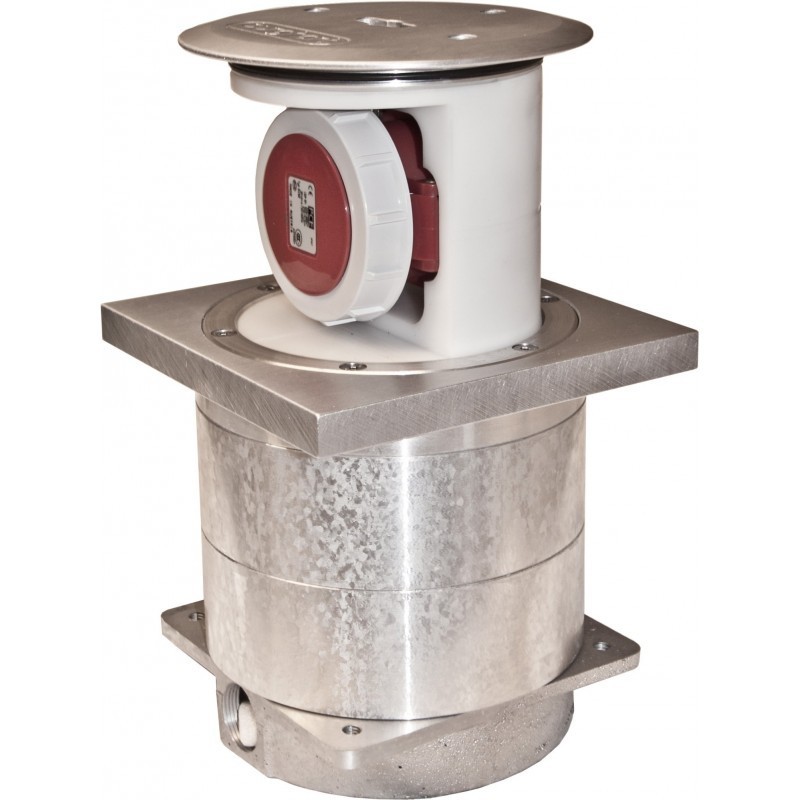
Original Source: https://www.solarquotes.com.au/blog/ev-charging-industrial-socket/

